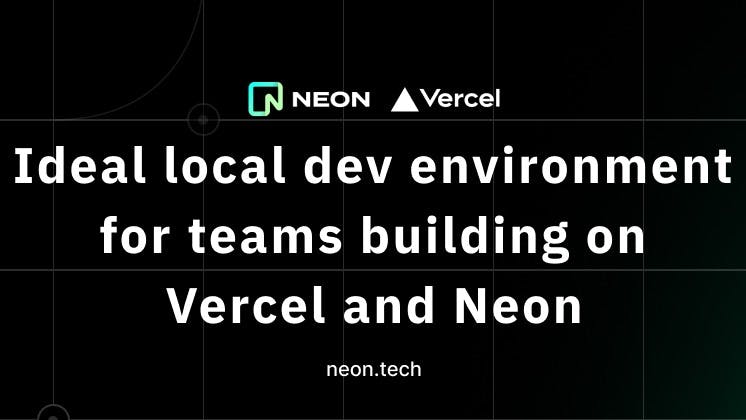🚀 Data Analytics Trends in 2025 🚀
The global data analytics market is projected to exceed $140 billion by 2025 . This highlights its crucial role in today’s hyperconnected business landscape, where real-time insights and scalable solutions are no longer just advantageous but essential for success. Data analytics is no longer confined to crunching numbers; it’s about unearthing actionable insights that drive innovation and efficiency across all sectors. As we step into 2025, the field is rapidly evolving, with new trends emerging that promise to reshape how businesses operate and make decisions. This article delves into the key data analytics trends shaping 2025, exploring the impact of cutting-edge technologies, evolving methodologies, and the growing importance of data governance.
Rise of Augmented Analytics
- Augmented analytics leverages AI and machine learning to automate key aspects of the analytics process, such as data preparation, insight generation, and explanation.
- Gartner predicts that by 2025, augmented analytics will feature in 70% of modern analytics platforms.
- “Agentic AI bots” automate reporting, summaries, and visualization creation while requiring human oversight to address biases.
- Tools like Looker, Tableau, and PowerBI democratize data analysis, enabling non-technical users to leverage data-driven decision-making.
- Encourages a data-driven culture, empowering more people across organizations.
The Growing Importance of Data Governance
- Privacy regulations like GDPR and CCPA drive robust governance frameworks (source).
- AI automates governance tasks like data discovery, classification, and quality assurance.
- GDPR fines exceed €1 billion, emphasizing the consequences of non-compliance.
- Data governance is no longer just a theoretical priority — in 2025, it’s about implementing tools and strategies that embed governance into daily practices while unlocking AI capabilities. Organizations that prioritize governance solutions that make their data trustworthy, accessible, and usable across the board will be the ones that succeed
- Shift in leadership roles: Chief Technology Officers (CTOs) absorbing governance responsibilities traditionally held by Chief Data Officers (CDOs).
- Real-time governance ensures dynamic IoT data streams are compliant and secure.
- Data catalog: Organize and classify datasets to make data searchable. Paid tools include
Alation ,Alex Augmented Data Catalog , andInformatica Data Catalog . Open-source tools includeAmundsen ,Metacat , andMagda . - Data privacy and compliance tools: For managing data privacy and regulatory requirements. They track data classification, consent, and risk assessment. Paid tools include
OneTrust ,BigID , andTrustArc . Open-source tools includeFides andApache Ranger .
Python’s Continued Dominance
- Python dominates for its versatility in tasks like data cleaning, manipulation, and machine learning.
- Extensive libraries:
pandas,NumPy, andScikit-learnsupport diverse analytics use cases. - Seamlessly integrates with cloud platforms.
- Data analysts and data scientists find Python useful due to its readability and extensive libraries. Python is used in all stages of the data analytics process: data mining, data processing, and data visualization.
- The Python library Beautiful Soup is useful when data can’t be retrieved from APIs. This library is a powerful tool for scraping data and then arranging it in a useful format. In addition, the Python library Scrapy allows users to create programs designed to gather structured data from the internet, as well as extract data from APIs
- Example: Python outpaces R in production scalability and ecosystem flexibility.
- Tools like Jupyter Notebooks bolster its use in academia and industry.
Harnessing the Power of Unstructured and SemiStructured Data
- 80% of global data is unstructured, including text, images, and videos (
IDC ). - Applications: Sentiment analysis, trend detection, and customer insights.
- Challenges: Higher storage costs and the need for specialized tools like NLP and computer vision.
- Tools like
Hugging Face enable advanced NLP solutions. - Major analytics platforms now offer easy ways to talk to your data using NL2SQL.
- Tools like NLP can be expensive and require specialized skills to operate effectively. The need for continuous updates and maintenance of these technologies further adds to the complexity and cost
- Open data formats allow you to avoid vendor lock-in, giving your teams the freedom to select the best tool for every task — whether it’s a lightweight solution for quick insights or a powerful engine for large-scale analysis.
Addressing Data Silos
- In 2025, Natural Language Processing (NLP) will reshape how users interact with data, making insights accessible to everyone, regardless of technical expertise. This shift reduces reliance on analytics teams and empowers faster, more informed decisions.
- Silos limit the holistic view of operations and decision-making.
- Solutions like data fabric and
data mesh unify disparate sources for better governance. - Facilitate agile and transparent data analysis.
- Investments in breaking silos expected to grow significantly by 2025.
- Businesses sit on plasters of data, but using these reserves is about as easy as drilling a new oil in real life. Data silos increase proportionally to data volumes, which now grow by about 50% per year. Hence its elimination requires continuous efforts, not just adhoc tactical initiatives, applied to specific apps or data systems. (source)
The Rise of Lakehouse Architectures
- Companies have already migrated most of their data and analytics to the cloud and are now working on improving their processing capabilities. Some 70% of leaders expect that over half of corporate will be on the data lakehouse and 86% also plan to unify analytics data in a central repository.
- By 2025, over half of all analytics workloads are expected to run on lakehouse architectures, driven by the cost savings and flexibility they offer. Basically, Lakehouse architectures blend data lakes and warehouses for cost-effective scalability.
- Over 50% of analytics workloads predicted to transition to lakehouse platforms by 2025.
- Simplifies access patterns for real-time and batch processing.
- Example: Databricks’ success in deploying scalable lakehouse solutions.
- Must Read: BigLake: BigQuery’s Evolution toward a Multi-Cloud Lakehouse
Embedded Analytics and Real-Time Insights
- Integrates analytics into everyday workflows, delivering instant insights.
- Replaces reliance on standalone BI tools.
- Enhances productivity by providing real-time decision-making capabilities.
- Democratizes data access across teams, fostering innovation.
Explainable AI (XAI)
- Explainable AI (XAI) is gaining prominence as organizations increasingly prioritize transparency in AI systems. By making AI operations more understandable, XAI enhances trustworthiness and fosters user confidence – an essential feature for industries like finance and healthcare that operate under stringent regulatory scrutiny.
- Essential for trust and ethical AI use.
- Helps users comprehend model reasoning and decision-making processes.
- Reduces skepticism in AI-driven analytics and supports regulatory compliance.
- Increases Code Confidence. Every inference, along with its explanation, tends to increase the system’s confidence. Some user-critical systems, such as Autonomous vehicles, Medical Diagnosis, the Finance sector, etc., demands high code confidence from the user for more optimal utilization.
Edge Computing Will Gain More Edge 😉
- Processes data closer to its source, reducing latency for real-time analytics.
- Critical for IoT-driven industries like healthcare and manufacturing.
- Innovations like
TinyML enable analytics on small IoT devices. - Supports distributed systems for faster and more efficient processing.
- Going forward, the industry will not only witness a growth in the adoption of SLMs but also see optimized hybrid AI patterns with smaller models running on edge computing devices and LLMs on larger cloud deployments.
TLDR: Skills for Data Analytics Professionals in 2025
- Technical skills: Python, ML, cloud integration, and visualization tools.
- Soft skills: Communication, problem-solving, and adaptability.
- Deep understanding of governance principles and ethical decision-making.
- Increased reliance on low-code/no-code platforms for democratized analytics.
By embedding these trends and adopting cutting-edge practices, organizations can unlock the full potential of their data, fostering innovation, efficiency, and a sustainable competitive edge. Visual elements, such as graphs and charts, highlight the data’s scale and transformative potential, further emphasizing the importance of these advancements in the evolving analytics landscape.
References
https://www.appsilon.com/post/data-governance-life-sciences https://www.dataversity.net/data-governance-trends-in-2025 https://www.analytics8.com/blog/2025-data-analytics-priorities-what-really-matters https://www.secoda.co/blog/top-trends-in-data-governance-for-2025-insights-from-industry-leaders https://www.institutedata.com/us/blog/transform-your-future-making-the-leap-to-data-science-and-ai-careers-in-2025 https://blog.kudoswall.com/top-10-industries-seeking-data-analysts-in-2025/













